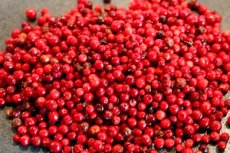Medical expert of the article
New publications
Preparations
Lingonberries and leaves with cystitis: medicinal properties
Last reviewed: 08.07.2025

All iLive content is medically reviewed or fact checked to ensure as much factual accuracy as possible.
We have strict sourcing guidelines and only link to reputable media sites, academic research institutions and, whenever possible, medically peer reviewed studies. Note that the numbers in parentheses ([1], [2], etc.) are clickable links to these studies.
If you feel that any of our content is inaccurate, out-of-date, or otherwise questionable, please select it and press Ctrl + Enter.

If you choose medicinal plants instead of tablets to treat bladder infections, the question of the latter's effectiveness arises. For example, does lingonberry help with cystitis?
Treatment of cystitis with lingonberry
It has been proven that lingonberry – the plant Vaccinium vitis-idaea of the heather family – is completely justifiably used for urinary tract infections, primarily in the treatment of cystitis (inflammation of the bladder), as well as for kidney problems. Moreover, it is not the berries that are used, but Folium Vitis idaeae – lingonberry leaves for cystitis, and they (in dried form) can be found in any pharmacy. [ 1 ]
The medicinal properties of lingonberry for cystitis are due to the biologically and pharmacologically active substances that are part of the leaves of this plant. Their main therapeutic effects in cases of inflammation of the bladder or urethra are associated with phenolic compounds - flavonols and simple phenols, including:
- flavonoids with disinfectant properties and antimicrobial activity such as arbutin or vaccinin (hydroquinone glycoside); astragalin (glucoside of the flavonol kaempferol); quercetin (aglycone of rutin), isoquercetin and hyperoside (quercetin galactoside);
- polyphenolic flavonoids catechin, epicatechin, catechin gallate;
- hydroxycinnamic phenolic acids in the form of ferulic and p-coumaric acids, as well as caffeic and caffeoyl-3-quinic (chlorogenic) acids, which have a detrimental effect on bacteria in vivo;
- phenol-containing tannins – procyanidins, proanthocyanidin and cinnamtannin, which exhibit both antioxidant and antibacterial activity.
The leaves also contain triterpene acids – ursolic and oleanolic, which enhance the antimicrobial and anti-inflammatory properties of the plant leaves.
Due to this combination of active substances, lingonberry leaf is not only a diuretic, but also has an antibacterial effect on the main uropathogens, including Escherichia coli, Proteus vulgaris, Candida albicans and Staphylococcus aureus. [ 2 ]
How to brew lingonberries for cystitis?
A decoction of lingonberry for cystitis is prepared at the rate of one tablespoon of dry leaf per 200-250 ml of water. The leaves are poured with boiling water and boiled in a closed enamel bowl (on low heat) for a quarter of an hour. Half an hour after the end of cooking, the decoction should be filtered and topped up with boiling water to the original volume. After cooling, the decoction is ready.
The second option is to prepare a lingonberry infusion for cystitis, which differs from a decoction in that it is not boiled. The easiest way to make an infusion is in a thermos: if it is 0.5 liters, then you need to put two tablespoons of leaves, pour boiling water and close the thermos for 5-6 hours. To treat acute cystitis, this amount of infusion will be enough for an adult for two days (store the infusion in the same thermos).
How to take lingonberry leaves for cystitis?
How to drink lingonberry for cystitis? Urologists and herbalists recommend taking the entire amount of the prepared decoction (200-250 ml) during the day - three to four times a few sips or a third of a glass three times a day, until the symptoms disappear. The infusion is taken in the same way.
In order to maximize the therapeutic effect of the biologically active components of lingonberry leaves, experts recommend drinking medicinal table hydrocarbonate (alkaline) mineral water (Luzhanskaya, Polyana Kvasova, Polyana Kupel, Borjomi, etc.) along with the decoction or infusion.
It should be borne in mind that the presence of recurrent cystitis in women, as well as bacteriuria or hematuria detected during a urine test, are not a contraindication for the use of herbal remedies, but as an adjunct - in complex therapy with the use of systemic antibiotics prescribed by the attending physician.
It is also necessary to take into account that – in addition to the diuretic effect – the decoction of lingonberry leaf has a hypotensive effect. Therefore, low blood pressure is a relative contraindication for the use of lingonberry. It is also not recommended to treat cystitis with lingonberry leaf in case of individual intolerance, [ 3 ] increased acidity of gastric juice, chronic renal failure and diarrhea. It is also not used for children under 12 years of age.
And can lingonberry be used for cystitis during pregnancy? Read the publications:
By the way, lingonberry acts similarly to bearberry (Arctostaphylos uva ursi) for cystitis, which is also part of the heather family and has the same medicinal properties. [ 4 ]
Attention!
To simplify the perception of information, this instruction for use of the drug "Lingonberries and leaves with cystitis: medicinal properties" translated and presented in a special form on the basis of the official instructions for medical use of the drug. Before use read the annotation that came directly to medicines.
Description provided for informational purposes and is not a guide to self-healing. The need for this drug, the purpose of the treatment regimen, methods and dose of the drug is determined solely by the attending physician. Self-medication is dangerous for your health.

